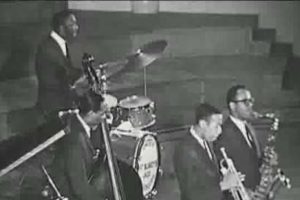In the video above, Herbie Hancock explains to the audience and a rapt Elvis Costello the story behind the song “Watermelon Man,” which was a hit for him and for Mongo Santamaria.
The song, Hancock tells Costello, was an attempt to relate to his African-American heritage. The title of the song and its theme are based on the horsedrawn carts sold watermelons in Hancock’s native Chicago. He says that the melodies are based on the sound of the horse hooves on the cobblestones and the ladies calling out, “Hey, watermelon man.”

Hancock also describes how the song reached Santamaria, who had a hit with it as well. He says that trumpet player Donald Byrd was chatting with Santamaria at a club. The Cuban artist said he was looking for a song that linked African-American and Cuban-American music. Byrd asked Hancock, who was present, to play “Watermelon Man.” Santamaria grabbed his bongos, the band jumped in and soon the entire place was up and dancing.
In all, more the song has been recorded more than 200 times. It even had a regular slot as the background music on Weather Channel’s local forecasts.
A few words about Hancock: AllMusic calls him “revered and controversial.” The nicely written introduction to the profile says that he was a protégé of Miles Davis who “cut a zigzagging forward path, shuttling between almost every development in electronic and acoustic jazz and R&B over the last third of the 20th century and into the 21st.” Essentially, the profile says that Hancock takes everything that the music world creates, including electronic music and acoustic jazz, R&B and synthesizes it in his own style.
Above is at least parts of two versions by Hancock. Below is Santamaria’s version.
NPR’s bio of Herbie Hancock is excerpted in the blue box.











Recent Comments